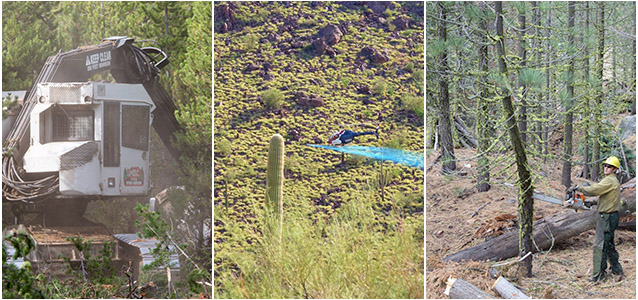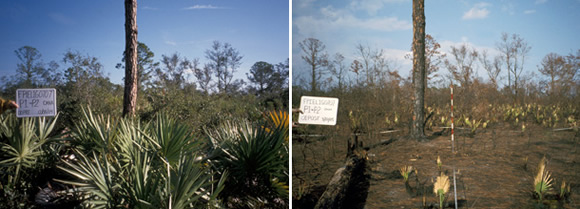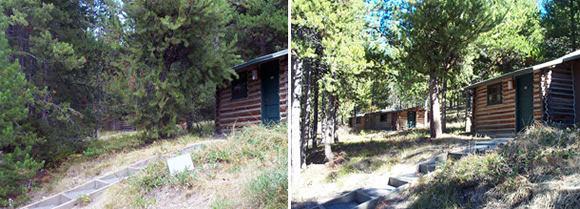This article is part of the Wildland Fire Learning In Depth series. It is designed for students who want to learn more about fire. Find the complete series on the Fire subject site.

NPS
Fuel reduction projects and vegetation treatments have been proven as a means of lessening wildfire hazards, catastrophic fire and its threat to public and firefighter safety, and damage to property.
The objective is to remove enough vegetation (fuel) so that when a wildfire burns, it is less severe and can be more easily managed.
When vegetation, or fuels, accumulate, they allow fires to burn hotter, faster, and with higher flame lengths. When fire encounters areas of continuous brush or small trees, it can burn these “ladder fuels” and may quickly move from a ground fire into the treetops, creating a crown fire.

NPS
Hazard fuel reduction generally requires the reduction of surface and ladder fuels. It may also require thinning out dense tree stands, preserving mature-sized trees in some instances. It can be accomplished using fire, biological methods, and mechanical treatments to remove or modify fuels in forested areas. Thinning trees, removing underbrush, and limbing trees are done using hand crews or machines. Cut material is ground into chips or piled and burned during the winter. Biological methods include grazing and are usually not used in national parks.

NPS
Prescribed Fire
Fire can be used to meet management goals, either by setting prescribed fires or using natural lightning ignitions. Before fire can be used, the park must have an approved fire management plan and the fire must meet established criteria. Using fire to reduce fuel hazards is prohibited in many areas. In these instances treatments, generally mechanical, are used to prepare an area so that prescribed fire can be used safely.

NPS photos by Shanna Ramsey.
Wildland Urban Interface (WUI)
Much of the effort in fuels reduction is focused in and around wildland urban interface (WUI) developments both inside and outside of parks. Effective fuels mitigation treatments are implemented across jurisdictional boundaries, on adjoining private lands, or within the respective communities with coordination, collaboration, and partnering on these projects. Projects of this type include fuel breaks, thinning, pruning, landscape modifications, etc.

Last updated: May 10, 2017
